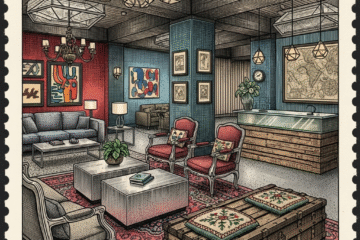In commercial and hospitality projects, design success depends not only on creativity but on timing. The most effective interiors begin with collaboration — early, transparent, and strategic. At Hicks Furniture, we work alongside architects, designers, and developers from the outset of a project to align layout, materials, and manufacturing. This early integration consistently reduces delays, avoids costly revisions, and ensures that every piece of furniture fits perfectly — both in space and in purpose.
The Cost of Late Coordination
Late-stage design decisions often lead to rework, procurement delays, and material waste. According to a 2022 study on construction coordination, design changes introduced after fabrication can increase project costs by up to 15% and extend timelines by 20% (Alaka et al., 2022). In the fast-paced world of hospitality, those numbers represent lost revenue and operational disruption.
Early consultation eliminates these inefficiencies. By involving joinery and furniture specialists during the concept or schematic design stages, potential conflicts in layout, dimensions, and material availability are resolved before they reach site level.
Designing with Precision from Day One
Every project begins with intent — a story the space needs to tell. When interior designers and furniture manufacturers collaborate early, concept drawings evolve alongside technical documentation. Hicks Furniture provides detailed 3D models, samples, and technical input to ensure each design element supports spatial flow, accessibility, and regulatory compliance.
This proactive exchange allows architects to refine layouts and M&E teams to coordinate seamlessly. For hospitality clients, it ensures that the finished interior matches the approved design — without compromise or last-minute substitutions.
Budget Predictability and Material Efficiency
Early involvement of the manufacturing team provides accurate cost forecasting. Hicks Furniture can validate design feasibility, source sustainable materials, and advise on lead times before procurement begins. This transparency prevents “value engineering” surprises later, where changes in specification lead to inconsistent quality or extended delays.
Material efficiency also improves through coordinated procurement. By aligning joinery, furniture, and finishes, wastage is reduced, and economies of scale can be achieved.
A 2023 study by the International Journal of Project Management found that integrated design and procurement models achieve up to 25% better budget adherence compared with sequential delivery models (Love et al., 2023). Collaboration, therefore, is not just creative — it’s economically strategic.
Streamlining the Construction Phase
When joinery and furniture details are resolved early, on-site coordination becomes smoother. Drawings are issued with exact dimensions, allowing contractors to install services, flooring, and lighting without adjustment. Prefabrication can run concurrently with construction, reducing overall project duration.
Hicks Furniture’s in-house production in Dublin allows manufacturing to progress while interior finishes are completed on-site, shortening lead times and enabling phased delivery for large-scale hotel or restaurant projects.
Quality Control and Risk Reduction
Late specification changes often introduce inconsistencies or overlooked details. By establishing joint design reviews early, Hicks ensures that every component — from tables to reception desks — meets both the designer’s vision and functional performance standards.
This reduces the risk of site modifications, ensures quality control, and prevents disputes between design and construction teams. The result is a project that meets brand standards, passes inspections smoothly, and opens on time.
Collaboration as Partnership
At Hicks Furniture, collaboration extends beyond consultation. We see ourselves as partners in execution — accountable for technical precision, craftsmanship, and delivery. Our process includes:
- Early Design Integration – Review of concepts, materials, and technical constraints.
- Prototyping and Sampling – Providing tangible feedback during design development.
- Cost and Programme Coordination – Transparent scheduling aligned with project milestones.
- Production and Fit-Out – Manufacturing and installation handled in-house for consistency.
This partnership model creates clarity and shared responsibility across disciplines, delivering results that benefit everyone — from architect to operator.
The Long-Term Value of Collaboration
Efficient project delivery builds trust, and trust leads to long-term relationships. Many of Hicks Furniture’s clients — from boutique hotels to large developers — return for multiple projects because they recognise that early collaboration not only protects budgets but enhances design quality.
When craftsmanship and coordination converge, outcomes are predictable, efficient, and beautifully executed.
References
Alaka, H. A., Oyedele, L. O., & Bilal, M. (2022). Impact of design coordination on construction efficiency and cost performance. Automation in Construction, 141, 104415. https://doi.org/10.1016/j.autcon.2022.104415
Love, P. E. D., Sing, C. P., & Liu, J. (2023). Integrated design and procurement: Managing complexity in project delivery. International Journal of Project Management, 41(2), 149–162. https://doi.org/10.1016/j.ijproman.2022.10.003





